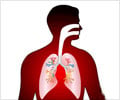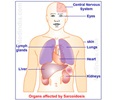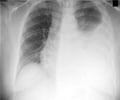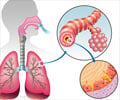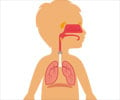Anatomy of an asthma attack
When the respiratory system is working properly, the air we breathe passes in and out of the lungs through a network of airways.
But for people with asthma, even a minor irritant will set off an immune response that can shut down the airways.
Asthmatic symptoms are usually quite variable, someone with asthma may go for periods of time without symptoms, and then suddenly have severe episodes for days at a time. The most common symptom is wheezing.
Routine treatment for asthma includes inhaled bronchodilators, injected epinephrine (adrenalin), or intravenous theophylline.
Bronchodilators are drugs which open up or dilate the constricted airways.
Taking anti-inflammatory drugs, aimed at reducing asthma is a relatively new approach to treating asthma. The idea behind it is that if the underlying inflammation of the airways is reduced, the bronchi may become less hyperactive, making future attacks less likely.
For asthma which is strongly triggered by allergies, allergen avoidance can often greatly reduce the amount of medication needed to control the asthma. Taking anti-allergic medications or taking shots for allergy desensitization are other alternatives.




